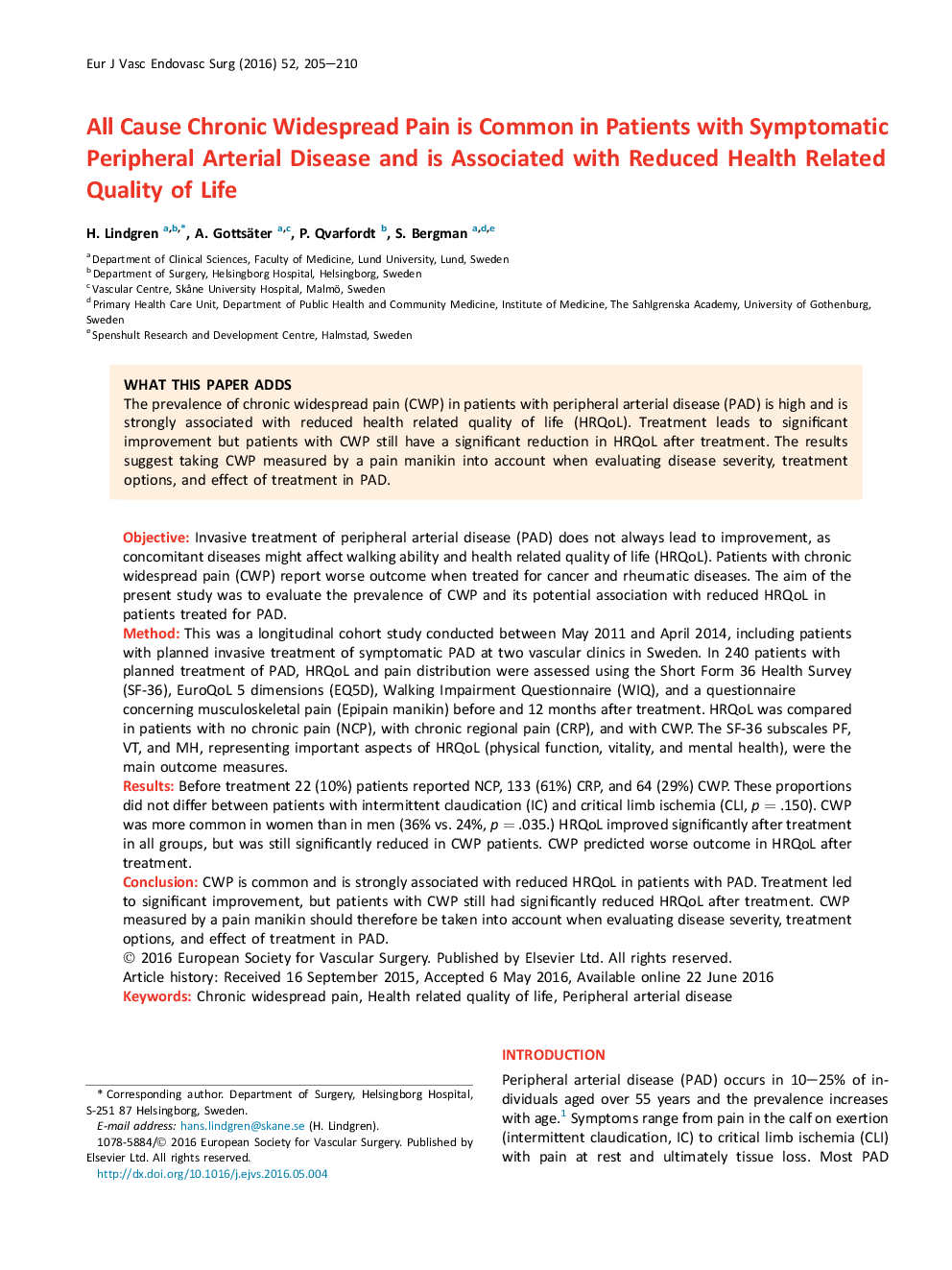| کد مقاله | کد نشریه | سال انتشار | مقاله انگلیسی | نسخه تمام متن |
|---|---|---|---|---|
| 5957170 | 1575427 | 2016 | 6 صفحه PDF | دانلود رایگان |
ObjectiveInvasive treatment of peripheral arterial disease (PAD) does not always lead to improvement, as concomitant diseases might affect walking ability and health related quality of life (HRQoL). Patients with chronic widespread pain (CWP) report worse outcome when treated for cancer and rheumatic diseases. The aim of the present study was to evaluate the prevalence of CWP and its potential association with reduced HRQoL in patients treated for PAD.MethodThis was a longitudinal cohort study conducted between May 2011 and April 2014, including patients with planned invasive treatment of symptomatic PAD at two vascular clinics in Sweden. In 240 patients with planned treatment of PAD, HRQoL and pain distribution were assessed using the Short Form 36 Health Survey (SF-36), EuroQoL 5 dimensions (EQ5D), Walking Impairment Questionnaire (WIQ), and a questionnaire concerning musculoskeletal pain (Epipain manikin) before and 12 months after treatment. HRQoL was compared in patients with no chronic pain (NCP), with chronic regional pain (CRP), and with CWP. The SF-36 subscales PF, VT, and MH, representing important aspects of HRQoL (physical function, vitality, and mental health), were the main outcome measures.ResultsBefore treatment 22 (10%) patients reported NCP, 133 (61%) CRP, and 64 (29%) CWP. These proportions did not differ between patients with intermittent claudication (IC) and critical limb ischemia (CLI, p = .150). CWP was more common in women than in men (36% vs. 24%, p = .035.) HRQoL improved significantly after treatment in all groups, but was still significantly reduced in CWP patients. CWP predicted worse outcome in HRQoL after treatment.ConclusionCWP is common and is strongly associated with reduced HRQoL in patients with PAD. Treatment led to significant improvement, but patients with CWP still had significantly reduced HRQoL after treatment. CWP measured by a pain manikin should therefore be taken into account when evaluating disease severity, treatment options, and effect of treatment in PAD.
Journal: European Journal of Vascular and Endovascular Surgery - Volume 52, Issue 2, August 2016, Pages 205-210
